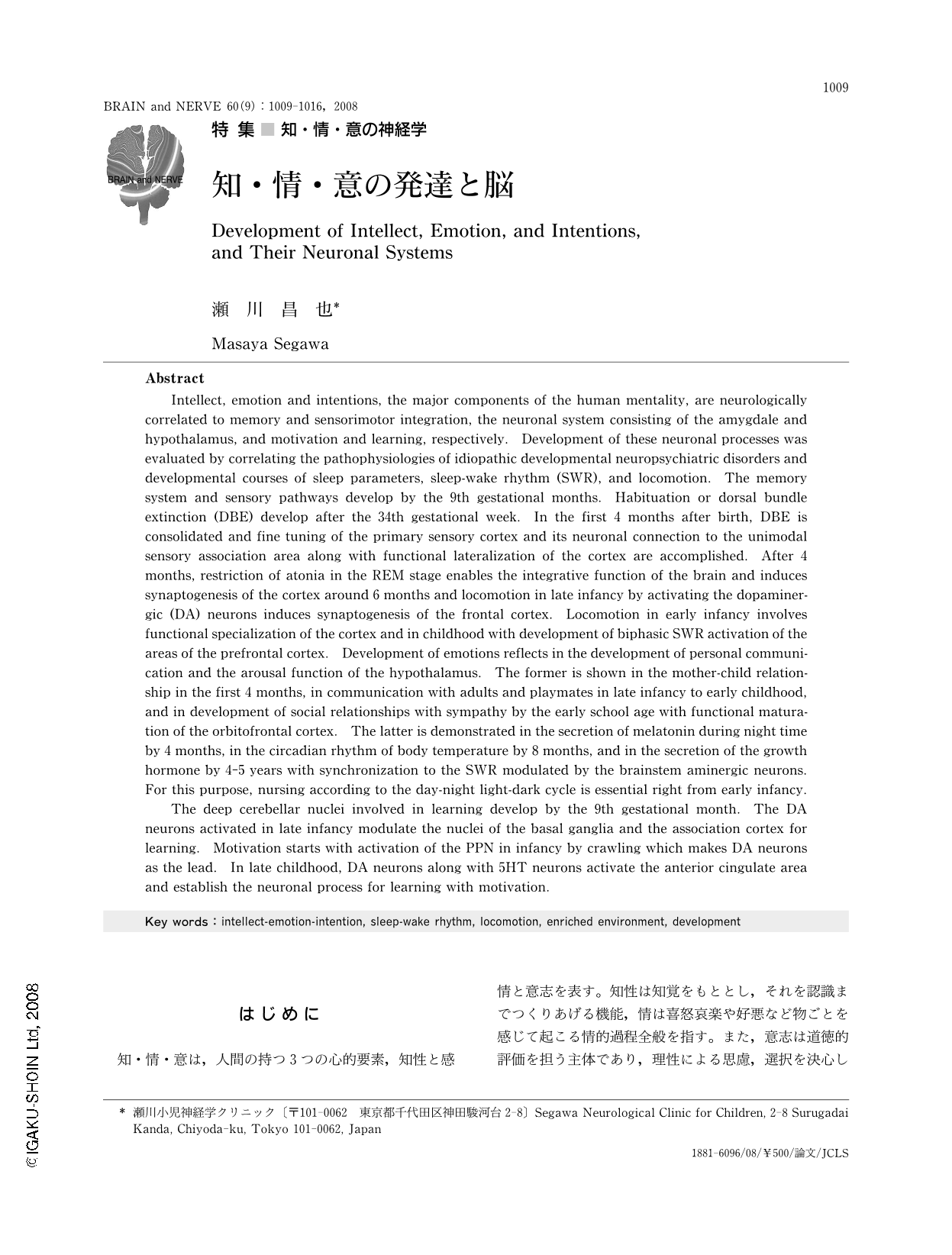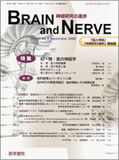Japanese
English
- 有料閲覧
- Abstract 文献概要
- 1ページ目 Look Inside
- 参考文献 Reference
はじめに
知・情・意は,人間の持つ3つの心的要素,知性と感情と意志を表す。知性は知覚をもととし,それを認識までつくりあげる機能,情は喜怒哀楽や好悪など物ごとを感じて起こる情的過程全般を指す。また,意志は道徳的評価を担う主体であり,理性による思慮,選択を決心して実行する能力とされている。これを高次機能の発現機構と対比すると,知性には感覚運動統合と記憶機構,情的過程には対人関係,社会性と情動に関与する扁桃体,視床下部を中心とする神経機構,意志には動機付けおよび学習機構が関与すると考えられる。これら神経機構の活性化には,それぞれに固有の脳幹・中脳のアミン系神経系が重要な役割を持つことが知られている。これは,脳の発達過程では特定のアミン系神経系が,固有の臨界齢をもって特定の神経機構の発達に関与していることを示唆する。そこで,これらの神経系の発達過程を概説し,それを遺伝的・素因的要因によるアミン系神経系の障害を病因に持ち,固有の発症年齢を持つ発達性精神・神経疾患の病態を対比することにより,人間の脳がいかにして知・情・意の発現を可能にするかを考察した。
Abstract
Intellect, emotion and intentions, the major components of the human mentality, are neurologically correlated to memory and sensorimotor integration, the neuronal system consisting of the amygdale and hypothalamus, and motivation and learning, respectively. Development of these neuronal processes was evaluated by correlating the pathophysiologies of idiopathic developmental neuropsychiatric disorders and developmental courses of sleep parameters, sleep-wake rhythm (SWR), and locomotion. The memory system and sensory pathways develop by the 9th gestational months. Habituation or dorsal bundle extinction (DBE) develop after the 34th gestational week. In the first 4 months after birth, DBE is consolidated and fine tuning of the primary sensory cortex and its neuronal connection to the unimodal sensory association area along with functional lateralization of the cortex are accomplished. After 4 months, restriction of atonia in the REM stage enables the integrative function of the brain and induces synaptogenesis of the cortex around 6 months and locomotion in late infancy by activating the dopaminergic (DA) neurons induces synaptogenesis of the frontal cortex. Locomotion in early infancy involves functional specialization of the cortex and in childhood with development of biphasic SWR activation of the areas of the prefrontal cortex. Development of emotions reflects in the development of personal communication and the arousal function of the hypothalamus. The former is shown in the mother-child relationship in the first 4 months, in communication with adults and playmates in late infancy to early childhood, and in development of social relationships with sympathy by the early school age with functional maturation of the orbitofrontal cortex. The latter is demonstrated in the secretion of melatonin during night time by 4 months, in the circadian rhythm of body temperature by 8 months, and in the secretion of the growth hormone by 4-5 years with synchronization to the SWR modulated by the brainstem aminergic neurons. For this purpose, nursing according to the day-night light-dark cycle is essential right from early infancy.
The deep cerebellar nuclei involved in learning develop by the 9th gestational month. The DA neurons activated in late infancy modulate the nuclei of the basal ganglia and the association cortex for learning. Motivation starts with activation of the PPN in infancy by crawling which makes DA neurons as the lead. In late childhood, DA neurons along with 5HT neurons activate the anterior cingulate area and establish the neuronal process for learning with motivation.

Copyright © 2008, Igaku-Shoin Ltd. All rights reserved.


